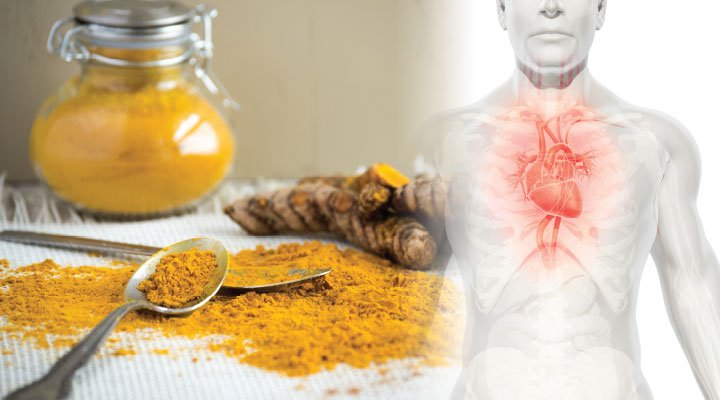turmeric benefits for skin
What are the properties and benefits of turmeric? Do you know how to store and select this spice?
The popularity of dried herbs and spices in supermarkets is on the rise these days. However, you should buy dried herbs and spices from local spice shops in your area since they are of superior quality and relatively fresh. Turmeric should always be organic. Store turmeric powder in a tightly-closed container in a cool, dry place away from light. The yarrow should be kept in the refrigerator. As its essential oil is aromatic, excessive heat should be avoided.

However, sunlight can fade its color. After use, the container should be tightly closed. If exposed to air for a long period of time, the taste and smell will disappear.
Turmeric’s properties and benefits include:
Turmeric’s benefits are primarily due to its phytochemical properties. In addition to Atlanta, Thormeron, and Zingiber essential oils, turmeric compounds called curcuminoids have several health benefits. Turmeric, proteins, resins, and sugars are also included.
Turmeric: what is its history?
For thousands of years, the plant has been used in Asian medicine, including Ayurveda, Chinese medicine, Side medicine, and Onani.
Turmeric has many health benefits and remarkable properties.
Inflammatory ailments such as cancer and arthritis can also be treated with turmeric. Turmeric’s curcumin composition also contributes to its neurological and cardiovascular health benefits.
Researchers have found that curcumin can reduce swelling in the body due to its anti-inflammatory properties. It is possible to increase your consumption of this spice by adding it to foods while you cook. Alternatively, you can make spice tea by boiling four cups of water with a teaspoon of this spice. Lemon or honey can also be added to taste.
Turmeric has excellent antioxidant properties, which result in it destroying peroxidation inhibition and reducing iron complexity. Not only does this spice have antioxidant properties, but so does its oil as well. Another study in mice found that the spice prevented oxidative stress caused by diabetes by acting as an antioxidant.
In addition to improving brain health and preventing neurological diseases, curcumin in this spice can also increase brain regeneration. Turmeron, another active ingredient in turmeric, is aromatized.
The curcumin in turmeric can treat depression, dyskinesia , and diabetic neuropathy. Additionally, curcumin showed a greater benefit than chronic stress in other animal studies.

Turmeric’s antioxidant properties, especially in diabetes, protect the heart. As a result of its curcumin content, this spice contributes to heart health by lowering blood cholesterol levels.
Studies have shown that curcumin in turmeric has anti-cancer properties. Cancer is less likely to develop in countries that consume about 100 to 200 milligrams of jaundice per day. Tumor formation was reduced in some cancer patients who used this spice. Other times, the immune system chemicals that kill cancer cells are more concentrated.
Turmeric contains curcuminoid pigments that are converted into genes that increase antioxidant synthesis. As a result, brain and skin cells are protected from damage, concentration is improved, and wrinkles are reduced.
Curcumin can lower blood glucose levels and prevent diabetes, according to a scientific study. Another study found that pre-diabetics receiving curcumin for nine months were less likely to develop diabetes. Type 1 diabetes patients’ immune systems can also be affected by it. It can also boost the effectiveness of immunosuppressants prescribed for patients with type 1 diabetes. Another study found that curcumin supplements reduced diabetic rats’ oxidative stress.
Diabetes-related liver disorders can also be treated with curcumin in turmeric. In another study conducted by Peking Chinese Medical University, the effect suppressed diabetic cataracts in laboratory mice.
The anti-inflammatory properties of this spice can significantly boost immunity. Overworked immune cells can lead to diseases such as obesity and heart disease when curcumin blocks them.
As a natural disinfectant, it has excellent antibacterial properties against various bacteria, including E. coli, Staphylococcus aureus, Salmonella typhi, as well as antiseptic properties.
Turmeric stimulates bile production in the liver, according to the Maryland Medical Center. Bile is used by the liver to flush out toxins. Additionally, the gallbladder produces cells that break down harmful compounds. Curcumin has such detoxifying properties that it can also be used to treat mercury poisoning.
Menstrual pain can be reduced by turmeric’s curcumin, which has been found to reduce the severity of menstrual symptoms. Its anti-inflammatory properties are responsible for this effect. Chinese and Indian physicians use turmeric to treat menstrual cramps, according to Evergreen State College.
Turmeric is a natural analgesic since it relieves inflammation. Osteoarthritis pain is especially painful. In addition to improving blood circulation, this spice can also help alleviate pain. Make a paste with two tablespoons of this spice and apply it to the affected area.
Inflammation and oxidative stress can cause stomach ailments such as gastric acid reflux, which can be treated with anti-inflammatory drugs and antioxidants. Turmeric can be a great option in this regard.
Weight loss and metabolism: This spice increases body heat, improving metabolism. In obesity and related problems, curcumin regulates fat metabolism.
Curcumin has what properties for the skin?
Turmeric contains antioxidants that enhance skin health. Acne and even psoriasis can be treated with this spice. Stretch marks and skin pigmentation can be treated with this.
Turmeric has the following skin benefits:
- Psoriasis treatment: This spice blocks inflammatory enzymes that cause psoriasis. Psoriasis may also be reduced by lowering cytokine levels, which stimulate cell inflammation. Psoriasis can be treated very easily with turmeric. Add half a teaspoon of this spice to water. Make a paste by stirring. Psoriasis can be treated with a thin layer of this ointment. Let stand overnight in cotton and breathable clothing. The next morning, remove the cloth and wash your skin with warm water.
- Antibacterial properties of this beneficial spice help treat acne and dry skin. Due to its anti-inflammatory properties, it also cures inflammation caused by pimples. As a face wash or as a face pack, turmeric can be used for oily skin.
- According to a Japanese study, this spice can prevent wrinkles and pigmentation. Chronic UVB exposure also reduces skin elasticity.
- Turmeric is excellent for treating stretch marks. Again, curcumin penetrates the cell membrane. Stretch marks may be cured by curcumin because it alters the physical properties of cell membranes.
- Turmeric’s whitening properties can be used to treat skin pigmentation. Infections can also be prevented by it. Mix a teaspoon of turmeric and lemon juice together. Leave the mixture on the affected area for 20 minutes. Wait at least an hour before going out in the sun. Cold water should be used to rinse. Before taking a bath, you can do this every day.
6. Turmeric’s contractile properties help heal foot cracks caused by plantar fasciitis. A paste can be made by mixing equal amounts of castor oil and coconut oil and adding a little of this spice. Leave this paste on your cracked heels for 15 minutes. After that, rinse with cold water.
How does turmeric benefit hair?
Turmeric compounds can prevent hair loss and treat diseases such as dandruff. Turmeric has the following benefits for your hair:
- Studies have shown that curcuminoid in this spice can help prevent hair loss. However, there is not enough evidence to support this claim.
- Turmeric and olive oil can be used to treat dandruff and improve scalp health. Leave it on your hair for 20 minutes before shampooing in equal proportions.


